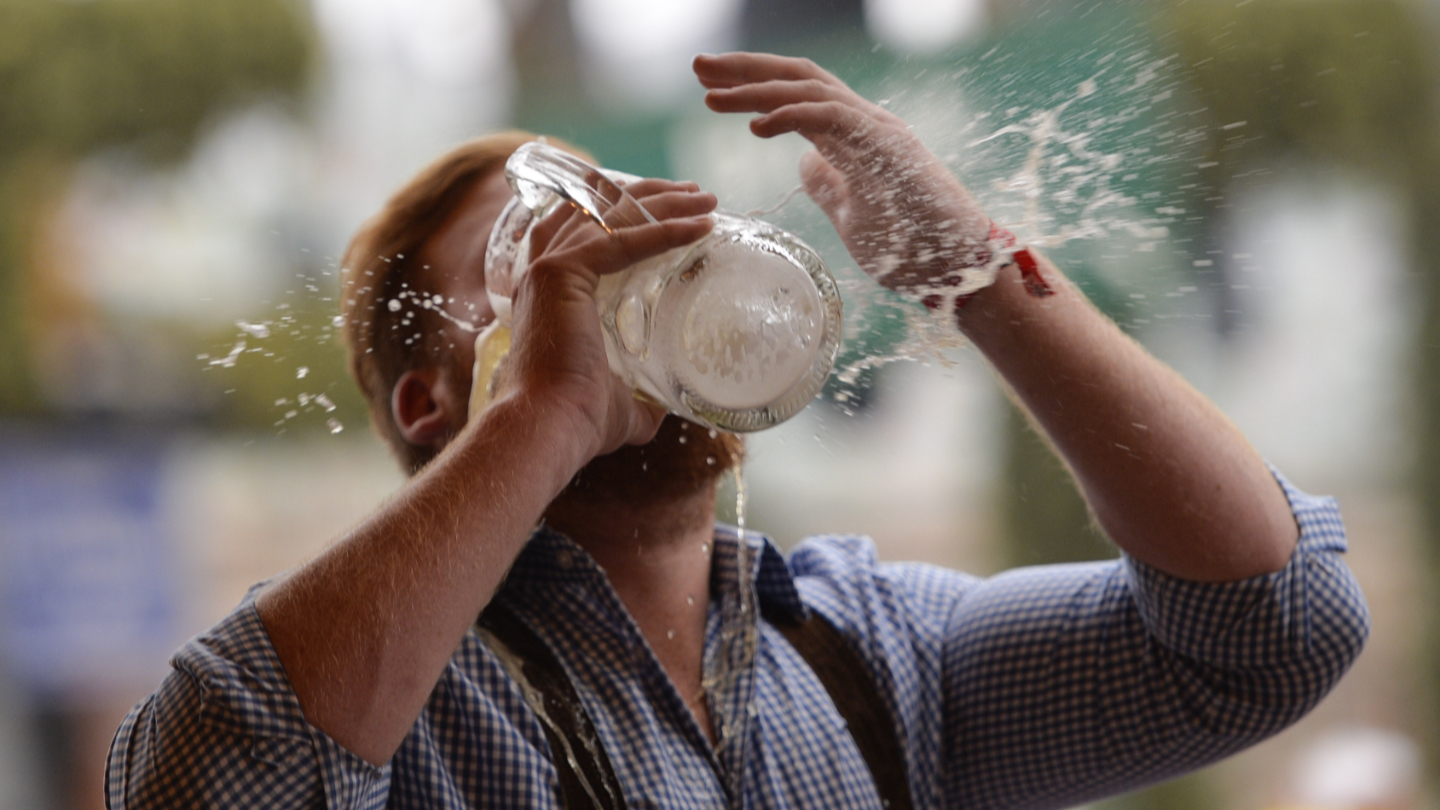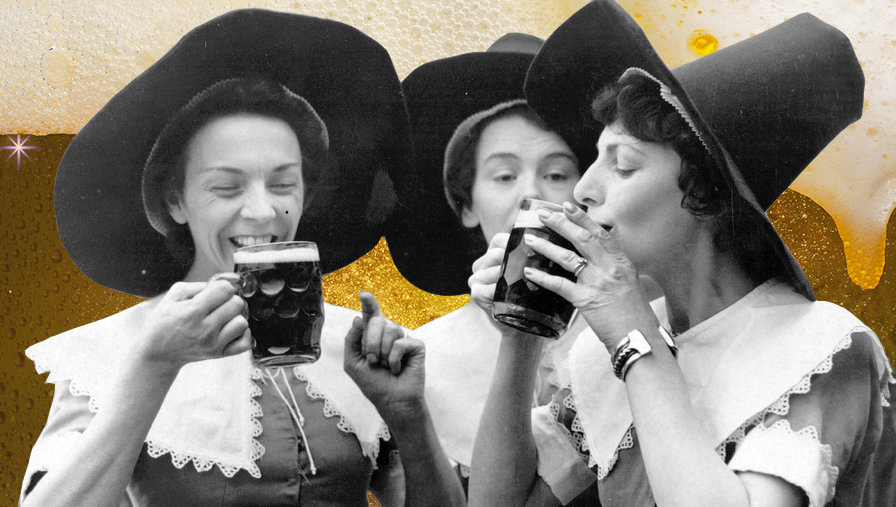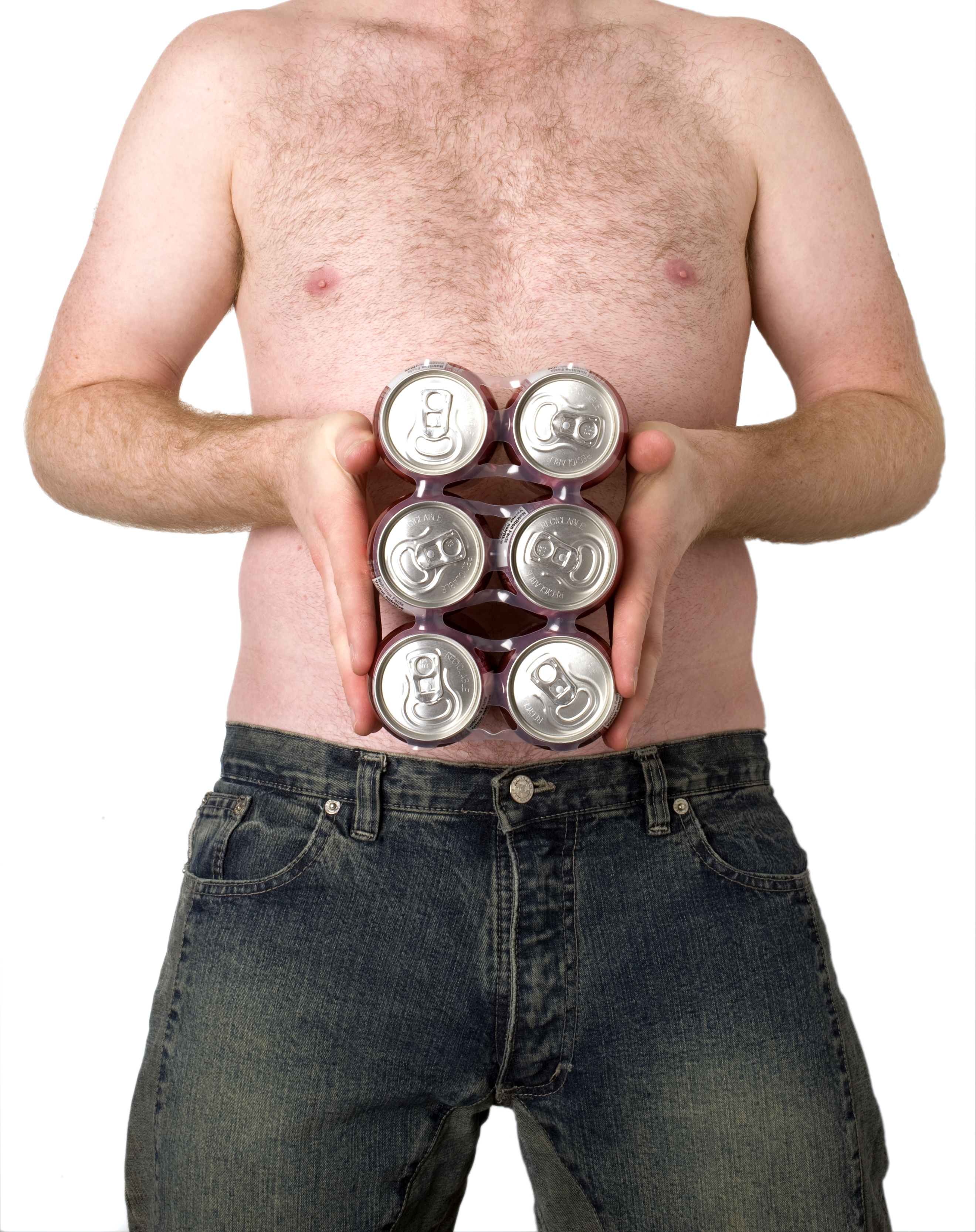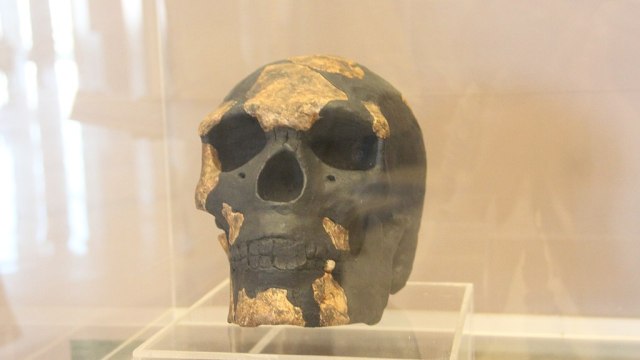The physics of foamy beer
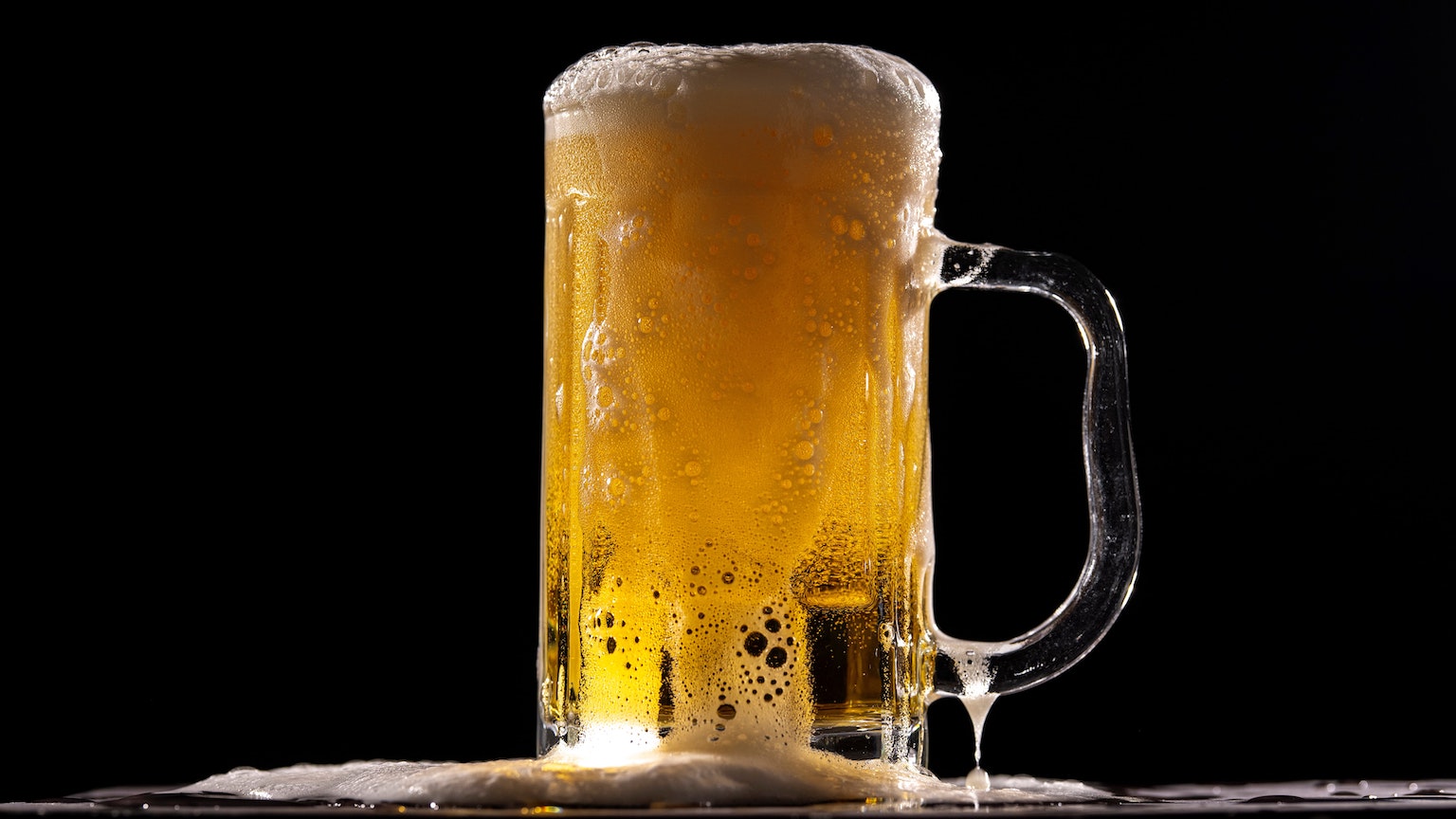
- No matter your favorite brew, the best beers are all foamy.
- A complex physical process called “nucleation” releases the bubbles that are dissolved in the beer.
- A clever design in the glass can boost bubble nucleation to maximize your enjoyment.
What makes a perfect glass of beer? Should it be cold? It depends. A lager is best ice cold, but an ale is better when warmer. The lager may appeal when pale, but the ale strives for copper, hazy gold, or brown. Some beers aim for a clean, crisp taste, and others a funky, thick bitterness. But one trait unites all of them: Foamy beer is best. A simple upgrade to the typical pint glass can harness physics to bring out the foam that improves any beer.
Carbonation puts the gas into the beer
Beer bubbles are carbon dioxide, which can get into the beer in a couple of ways. The natural fermentation process of yeast digesting the grains of the beer generates some CO2. But gas produced by fermentation at the brewery mostly escapes. So, the beer may be bottled before fermentation is complete, trapping the last of the gas within the bottle. Some beer is purposefully bottled with extra sugar and yeast to allow further fermentation. These drinks will be described as “bottle conditioned” (or “barrel fermented” if the beer is kept and served out of a barrel).
Most commercial beer does not carbonate itself through bottle conditioning. After the brewing process is complete, the drink is put into a pressure vessel. Carbon dioxide is then pumped into the vessel until a certain pressure value is reached. The mixture is held at pressure until the carbon dioxide is thoroughly dissolved into the liquid, and this process works faster when the beer is cold. (The solubility of CO2 in water decreases as the temperature increases.)
The details of choosing pressure, temperature, and time to achieve the right level of carbonation for a particular beer style are intricate. After either natural or forced carbonation, the gas is trapped in the beer via the seal of the cap until you crack it.
Nucleation liberates the bubbles
Nucleation is the process of a tiny, microscopic event triggering a much larger transformation in a material. When the material first ventures into the right conditions to melt, freeze, boil, or tear apart, it generally cannot do so until the very first atoms or molecules somewhere inside initiate the action.
Nucleation is probably easier to understand through example than definition. You have likely witnessed it in the boiling of water. A perfectly still container of water can be heated to boiling point without bubbling. The moment that the pot or cup is moved, bubbles furiously erupt. The water is ready to turn into vapor. It just needs the first tiny gas pocket to form and jostle the rest of the molecules into forming more bubbles.
Similarly, you may have seen freezing rain. Liquid droplets fall from the sky and instantly turn to tiny ice spheres upon contact with the ground. An internally still water droplet can be cooled below its freezing temperature and remain as a “supercooled liquid” until the first molecules are jarred by contact and leap into the shape of the very first ice crystal. Once the first crystal forms, crystallization spreads across the entire volume and freezes it solid in a flash.
In the same manner that a sudden motion creates a trigger event for bubbles to form, a small surface imperfection can also nucleate the growth of a bubble.
Make better foamy beer at home
Most pint glasses are roughly the same. Some found in taverns will possess noticeably more heft; the walls and base are made with extra glass to survive clumsy drops. But a truly nice beer glass will come with a built-in bubble nucleation system.
When the glass is empty, take a careful look at the inside. The nucleation sites are tiny pits etched into the bottom of the glass. You can see them in the glass below, above the stem and just below the index finger, arranged in a tiny outline of the CHIMAY beer company’s shield crest logo.
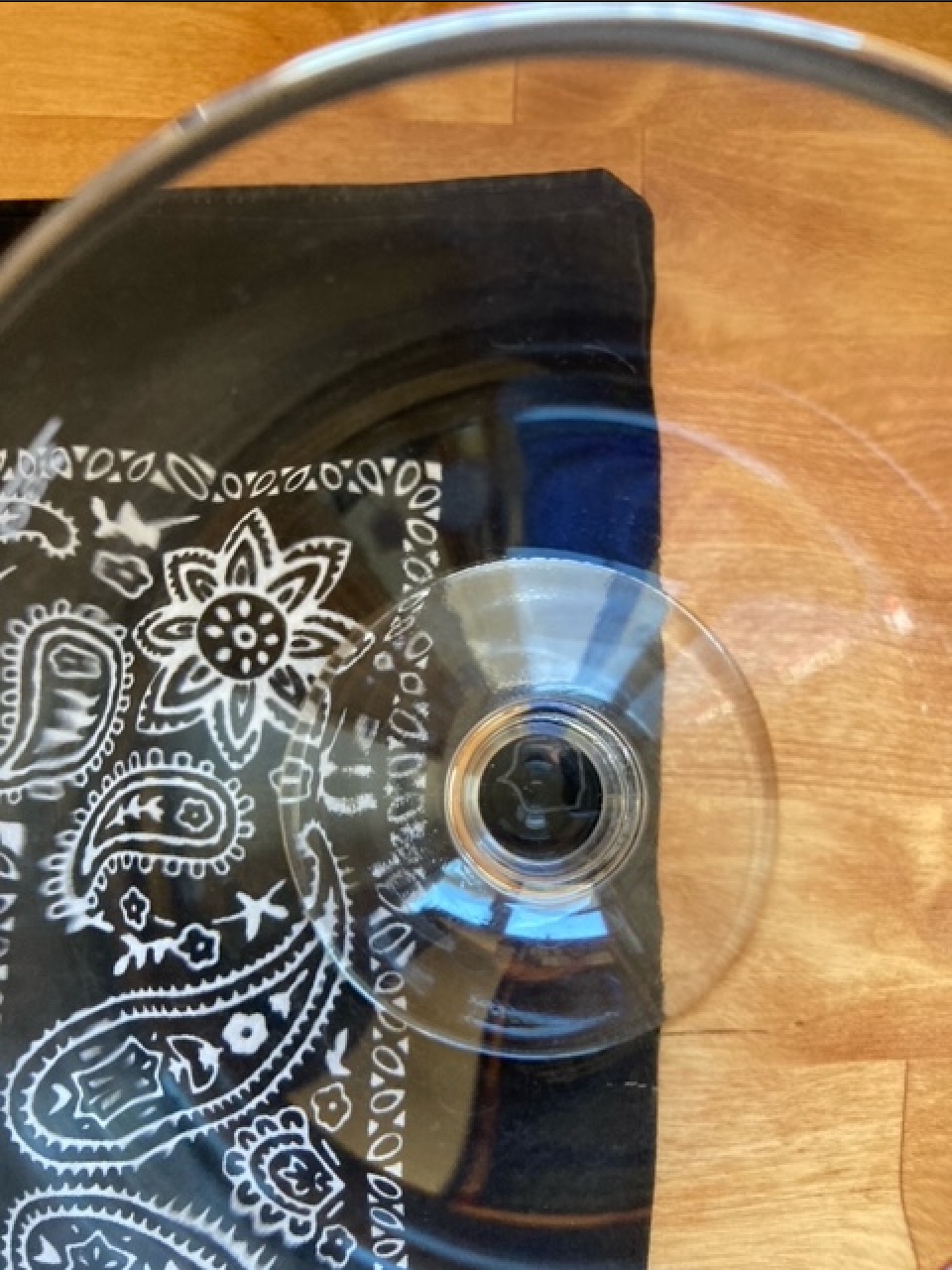
You can also watch for the telltale sign of bubbles continuously streaming up through the beer from one location on the bottom of the glass.
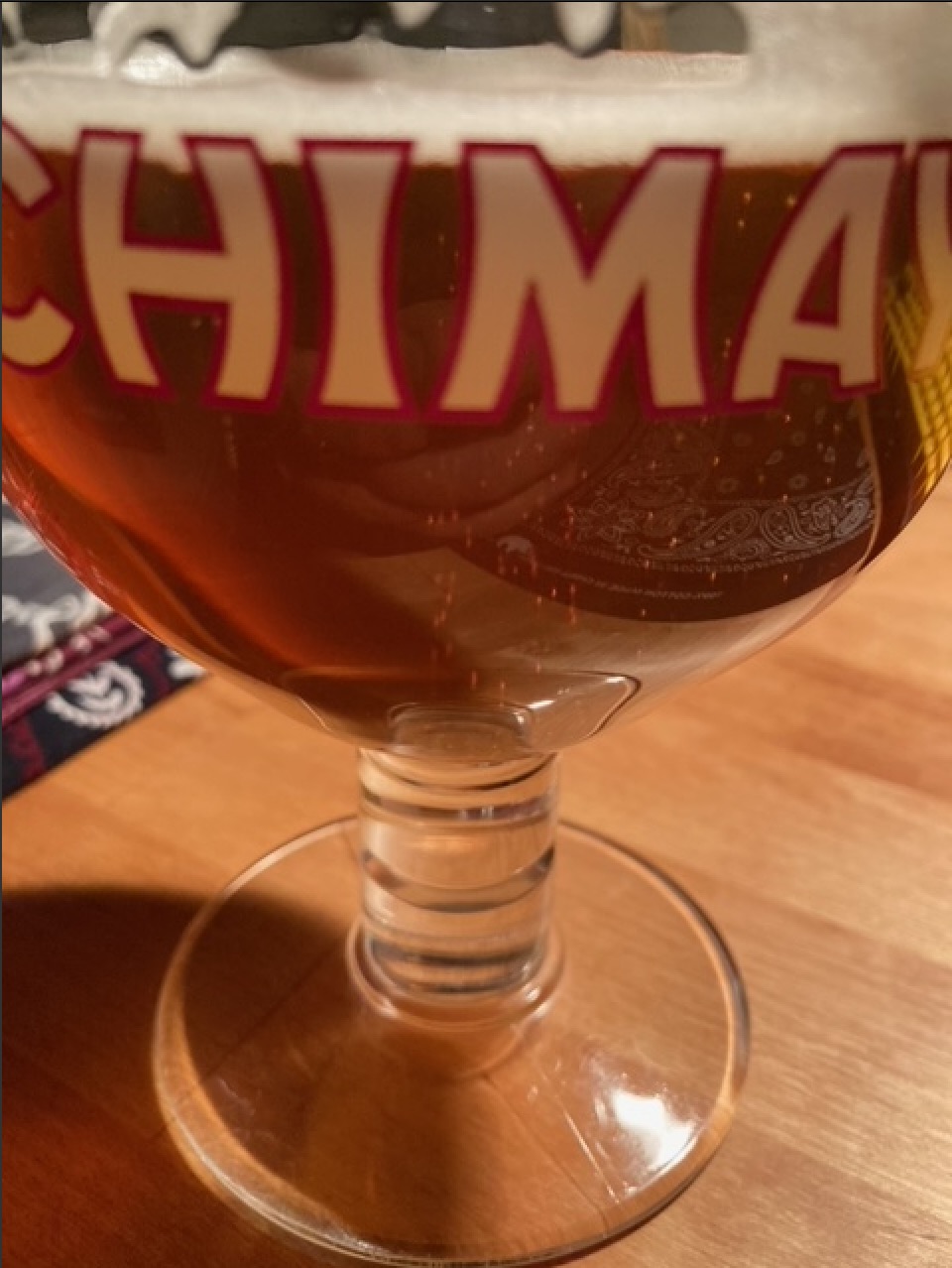
But watch out! If the beer is bubbling like crazy but the glass is not purposefully etched to create this effect, then the glass is probably just dirty. The same nucleation process can occur at other localized sites where pieces of crud are stuck to the sides or bottom of the glass. Loose particles of dirt or floating debris cause the same effect.
In a properly carbonated beer, ongoing nucleation at these etched sites will continually liberate bubbles. This creates a light foam on top of the beer that will last through the duration of the drink. You can buy these nucleated beer glasses for a moderate premium over standard glasses. Over many pints of foamy beer, the extra cost is absolutely worth it.
